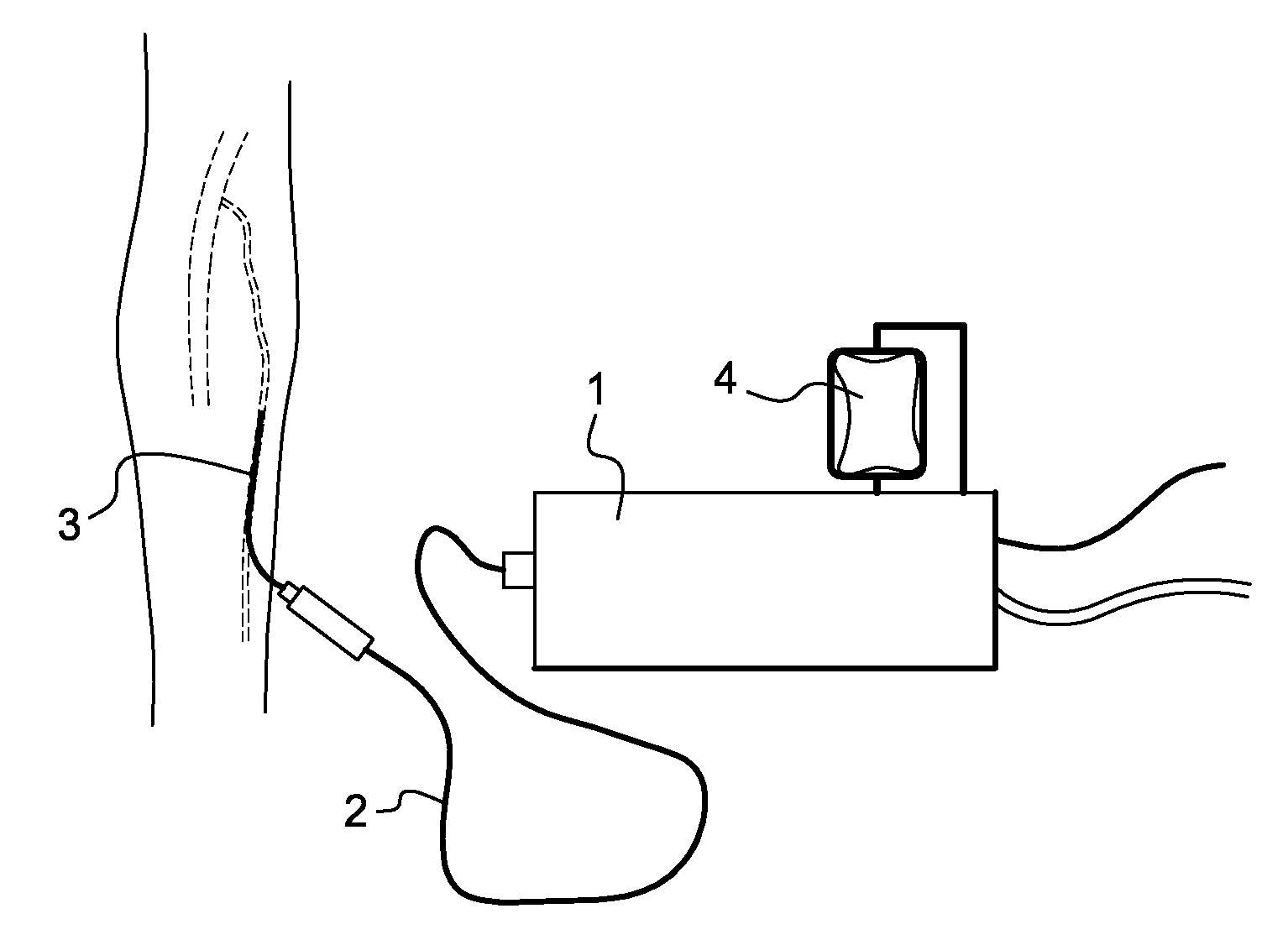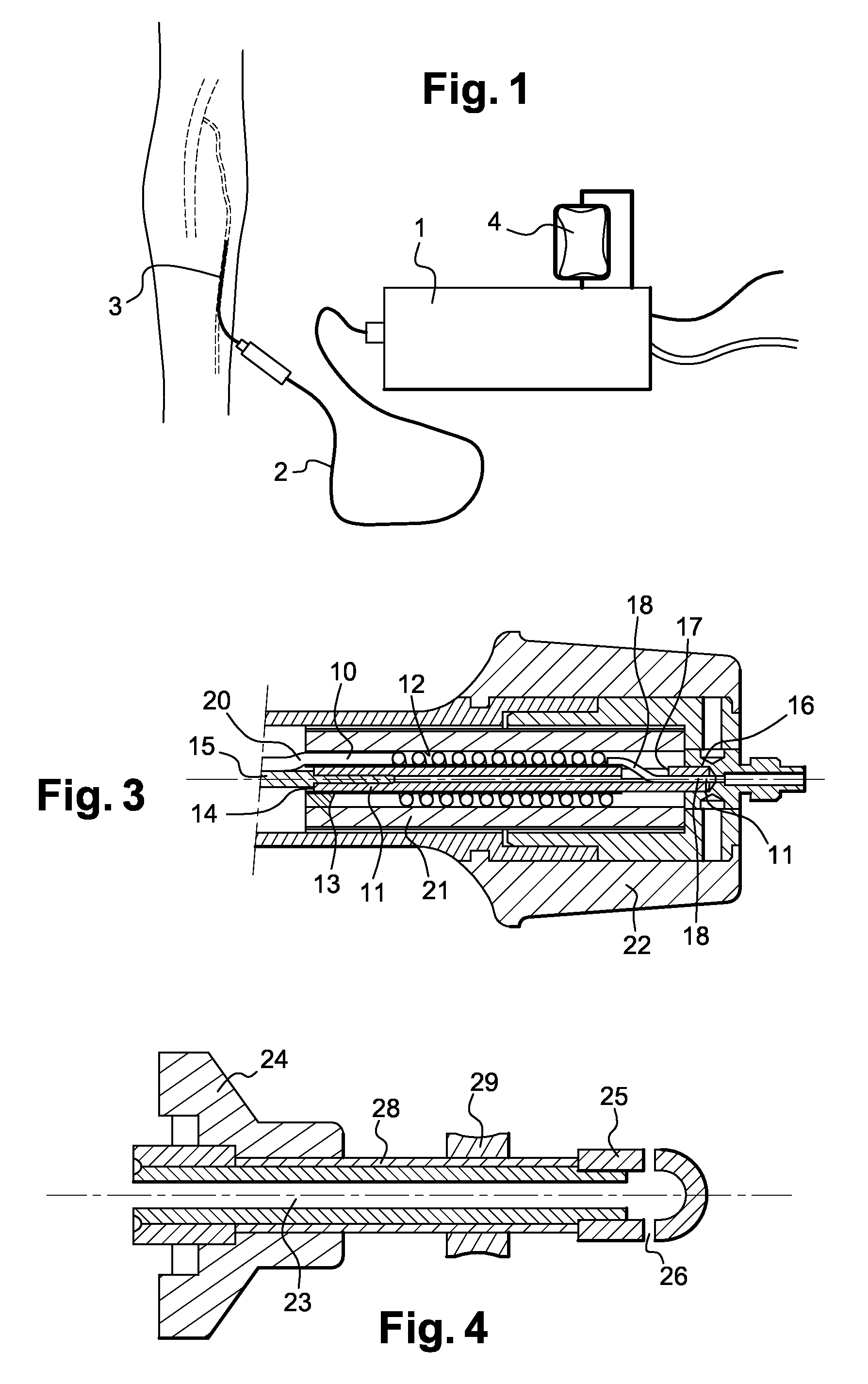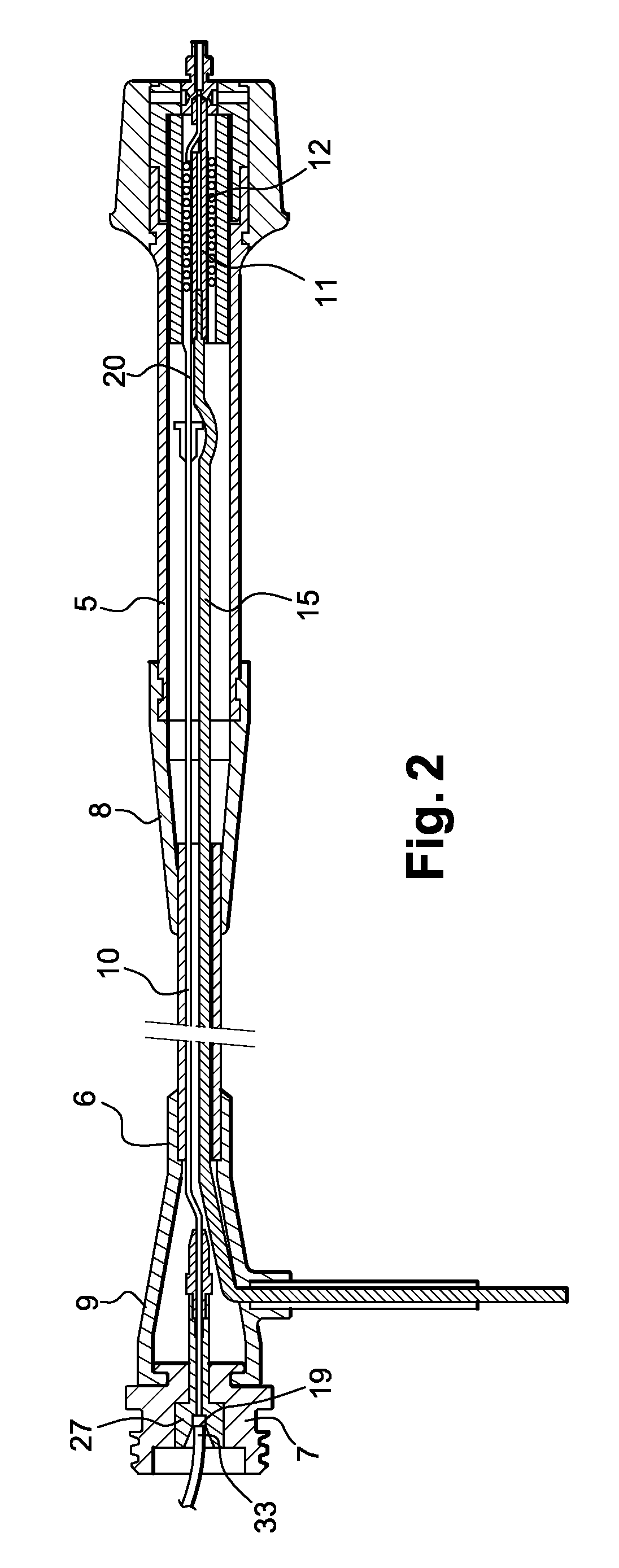Apparatus for injecting steam into a human or animal blood vessel
a technology for injecting steam and blood vessels, which is applied in the field of new devices for treating pathological venous or arteriovenous diseases, can solve the problems of high power requirement of electric arcs, significantly increasing the cost of equipment and therefore of procedures, and tubes without differential heating
- Summary
- Abstract
- Description
- Claims
- Application Information
AI Technical Summary
Benefits of technology
Problems solved by technology
Method used
Image
Examples
first embodiment
[0051]FIG. 4 is a diagram of the means of distribution in a In this configuration, the means of distribution is in the form of a microtube (23) of internal diameter equal to 150 μm and external diameter equal to 350 μm. This microtube (23) is connected to the distal end of the handpiece by any appropriate means shown in the diagram by number 24. According to a basic characteristic, the distal end of the microtube is closed by an additional stainless steel part (25) with a transverse opening (26) allowing the passage of steam. In practice, with the exception of the additional part, the microtube is covered with a thermal insulating substance in PTFE and / or PEEK (28). In addition, near its proximal end the microtube has a means for gripping it (29) to aid the surgeon as he inserts the microtube into the vessel.
[0052]In the embodiments shown in FIGS. 5 and 6, the PTFE sheath (28), arranged around the microtube (23) is no longer fixed, but mobile. In this hypothesis, the microtube is n...
third embodiment
[0055]FIG. 7 is a representation of the means of distribution in a In this case, the microtube is replaced by a needle (31) of continuous internal diameter of 0.15 mm and with three distinct sections obtained by grinding, respectively: a proximal portion (32) of 1.6 mm external diameter, a middle portion (33) of 1.2 mm external diameter and a distal end (34) of 0.7 mm external diameter.
[0056]The part of the needle intended to be introduced into the vessel is covered by a Teflon sheath or silicone deposit (not shown). Moreover, during storage, the needle is surrounded by a protective tube (35) considerably longer than the needle.
[0057]As already stated, the apparatus of the invention is intended for treating venous or arterio-venous diseases and more particularly for the treatment of varicose veins or hemorrhoids. In practice, the generator is set to deliver pulses of water of a volume of between 50 and 100 μl, advantageously 70 μl, transporting between 30 and 100 J, advantageously ...
PUM
 Login to View More
Login to View More Abstract
Description
Claims
Application Information
 Login to View More
Login to View More - R&D
- Intellectual Property
- Life Sciences
- Materials
- Tech Scout
- Unparalleled Data Quality
- Higher Quality Content
- 60% Fewer Hallucinations
Browse by: Latest US Patents, China's latest patents, Technical Efficacy Thesaurus, Application Domain, Technology Topic, Popular Technical Reports.
© 2025 PatSnap. All rights reserved.Legal|Privacy policy|Modern Slavery Act Transparency Statement|Sitemap|About US| Contact US: help@patsnap.com



